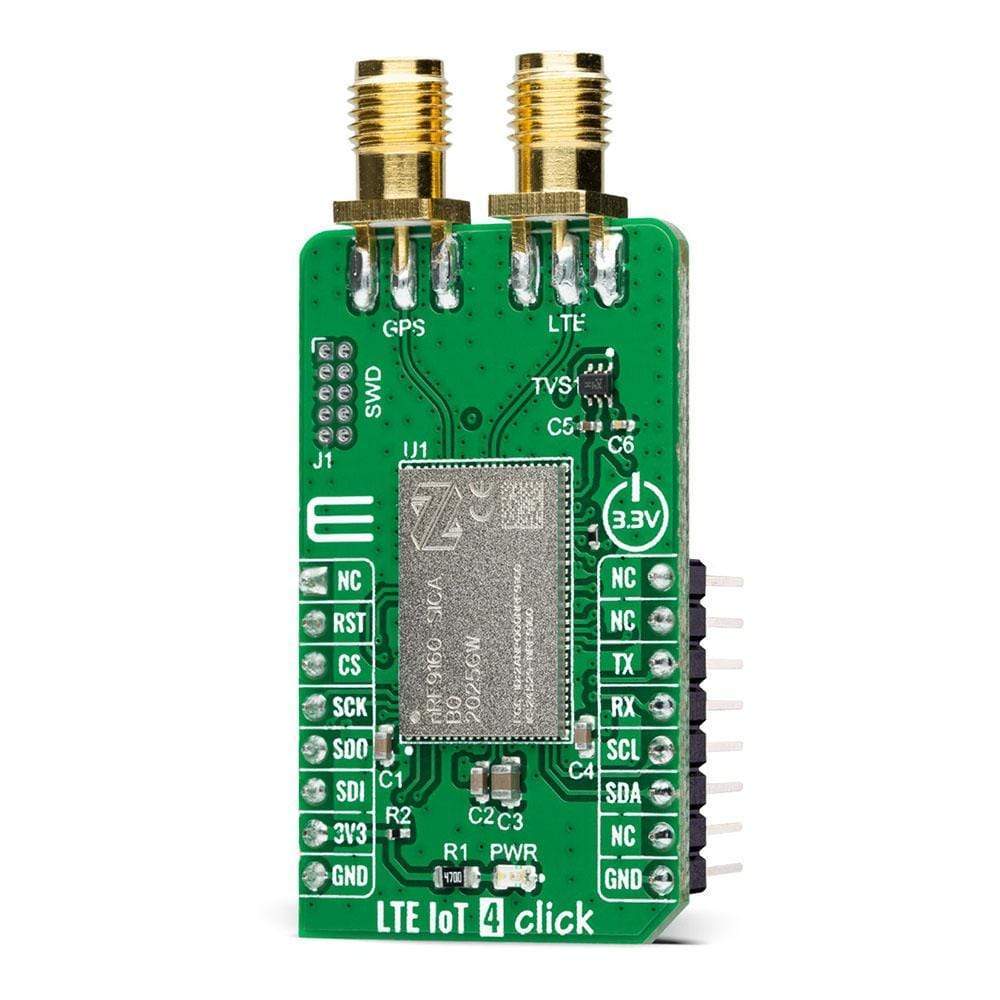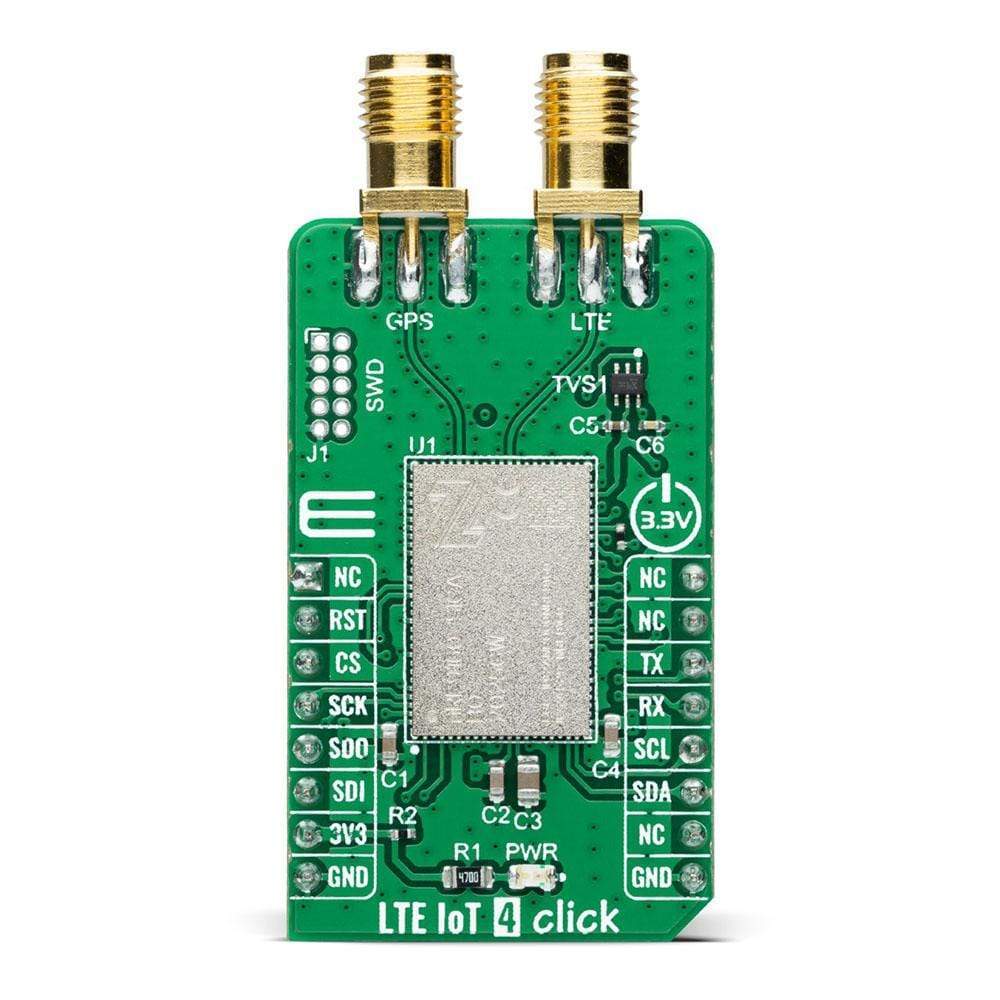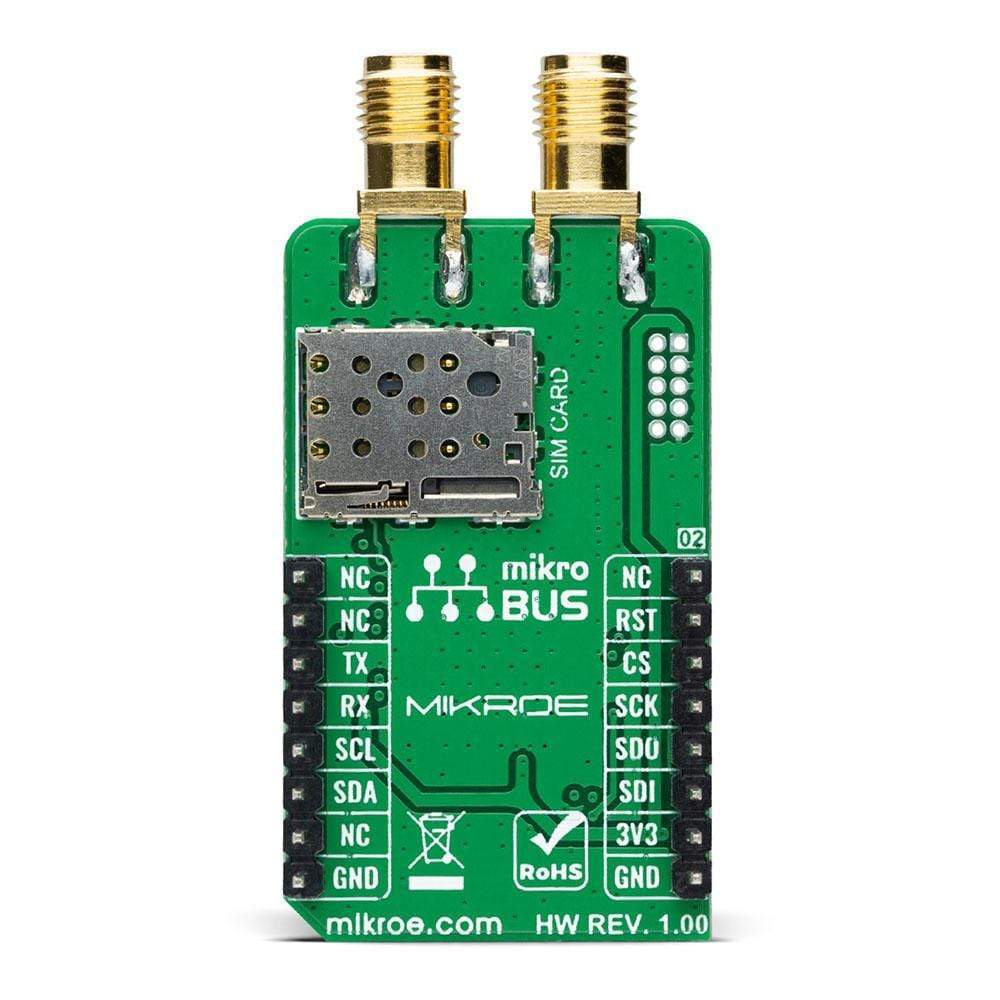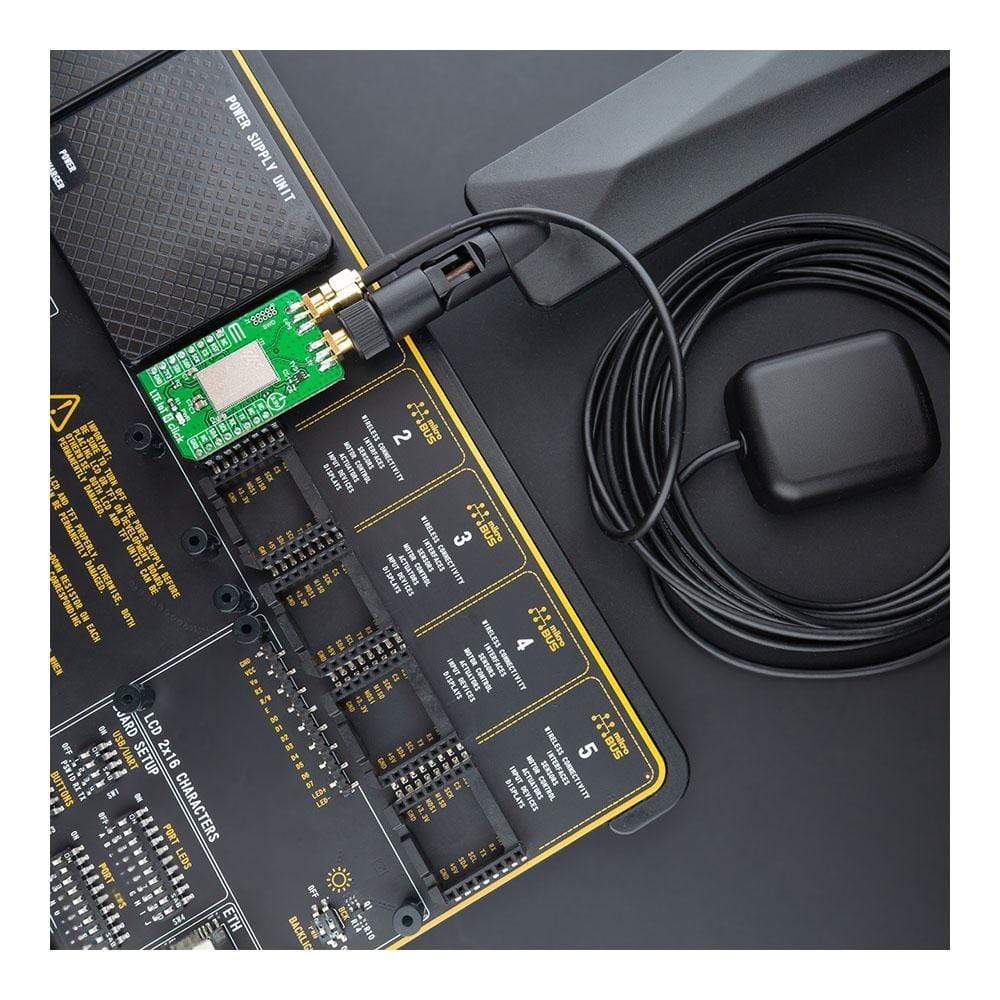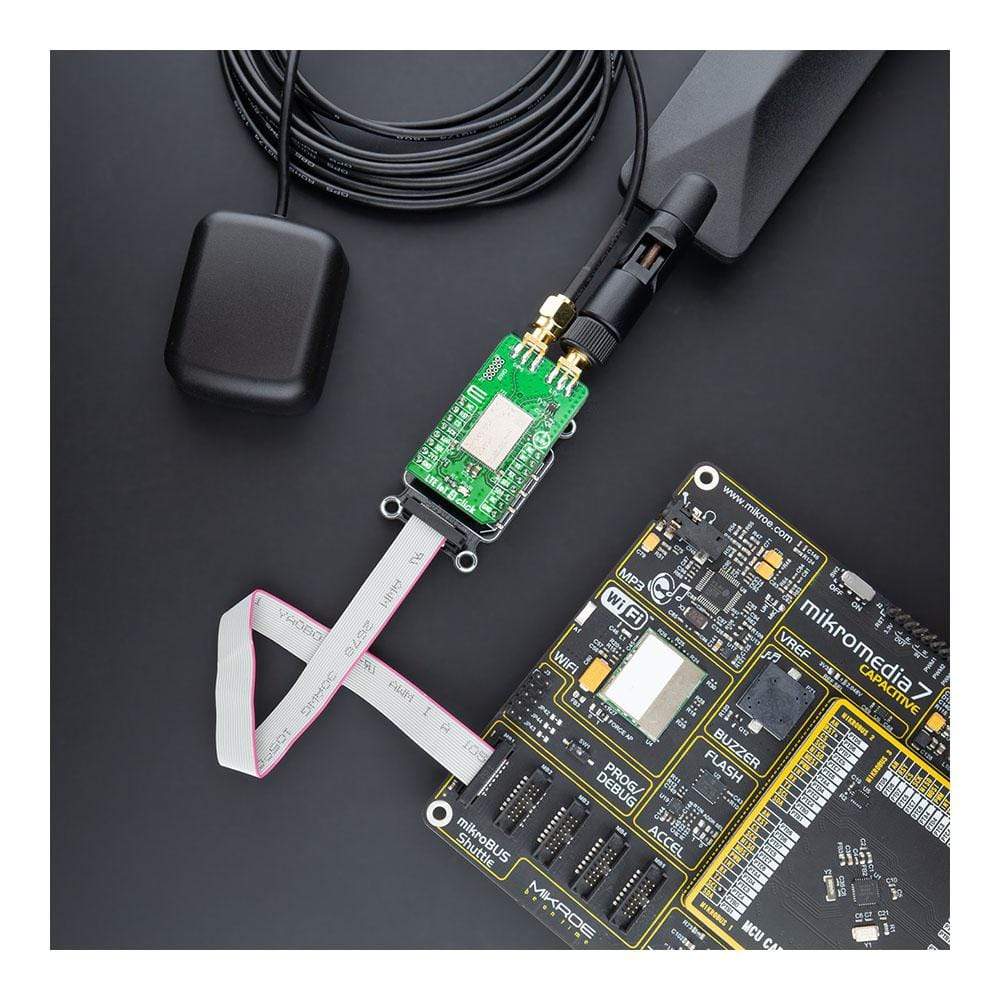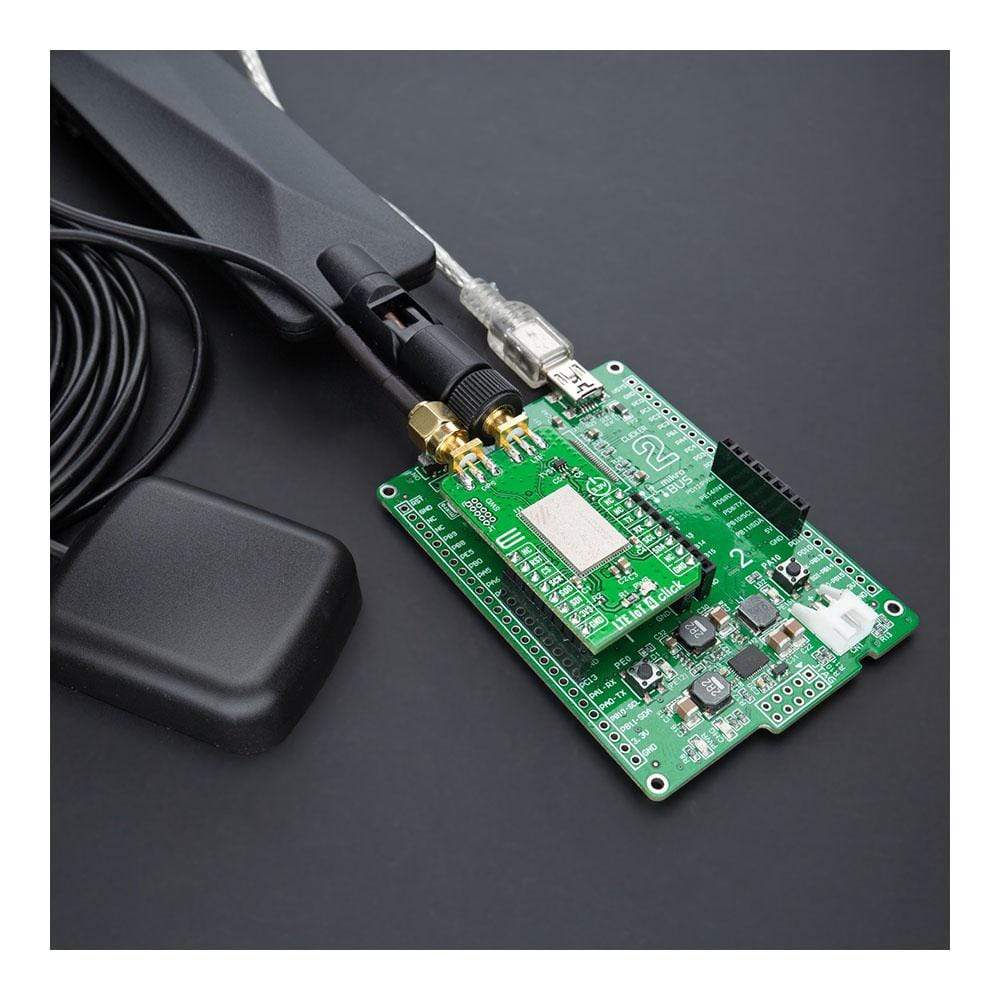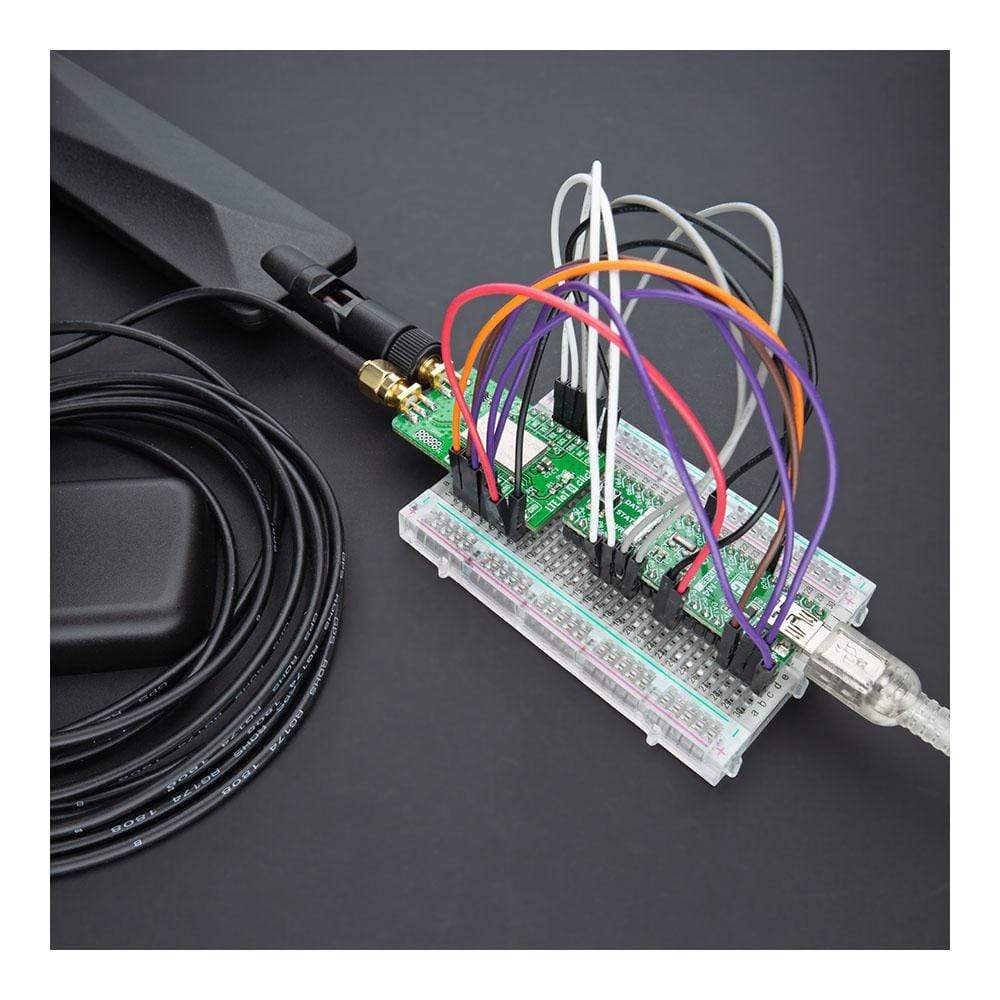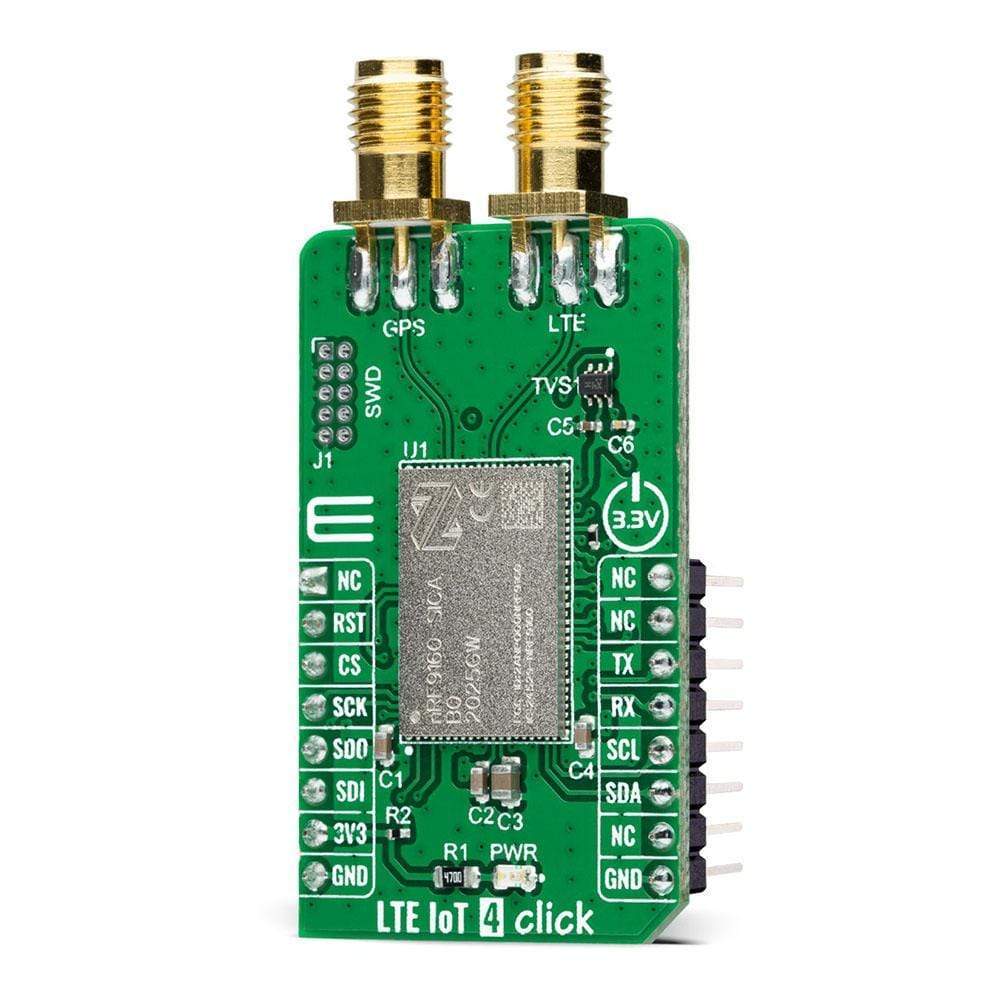
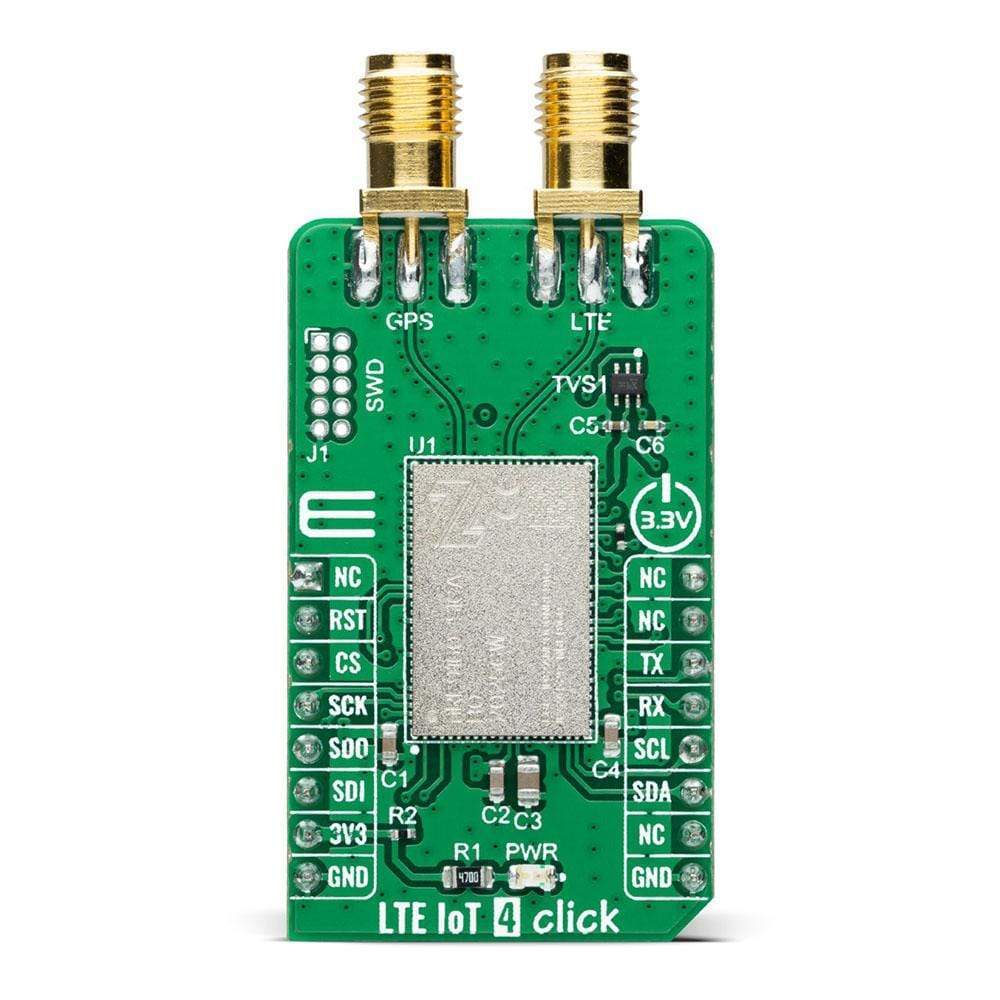
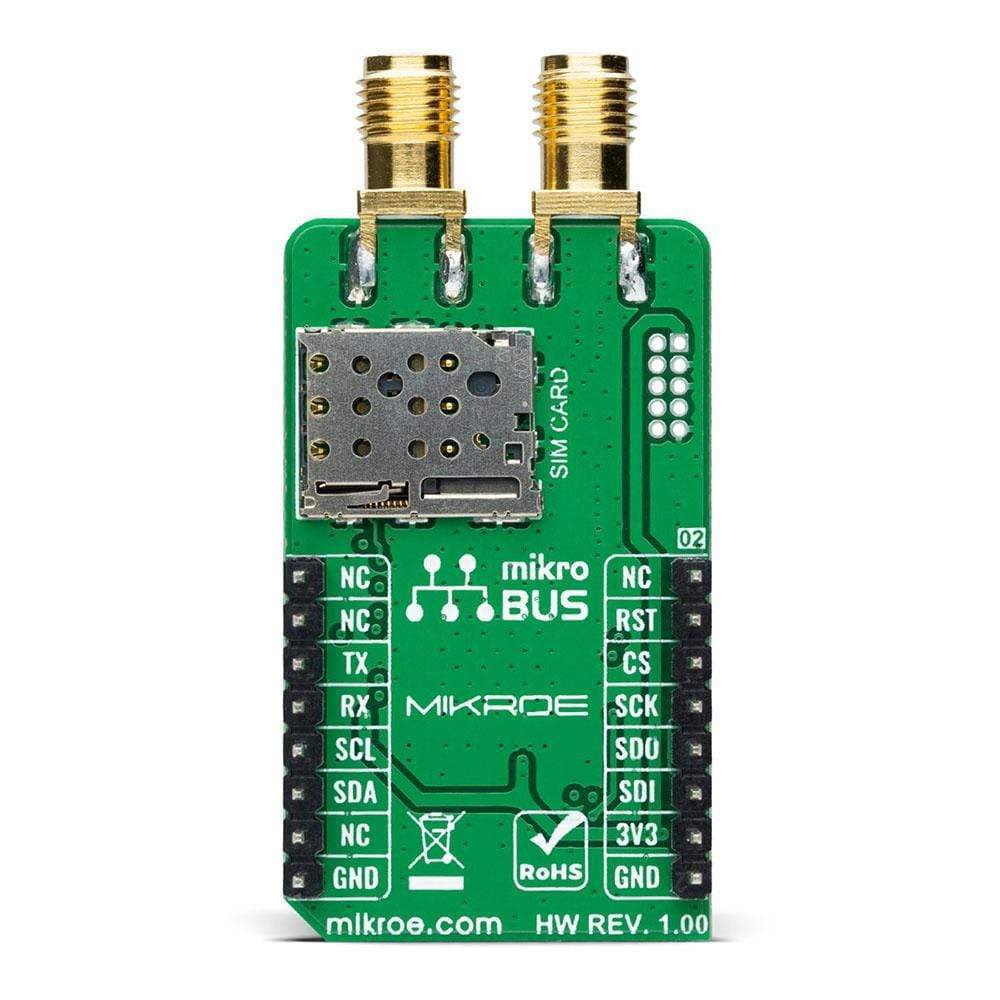
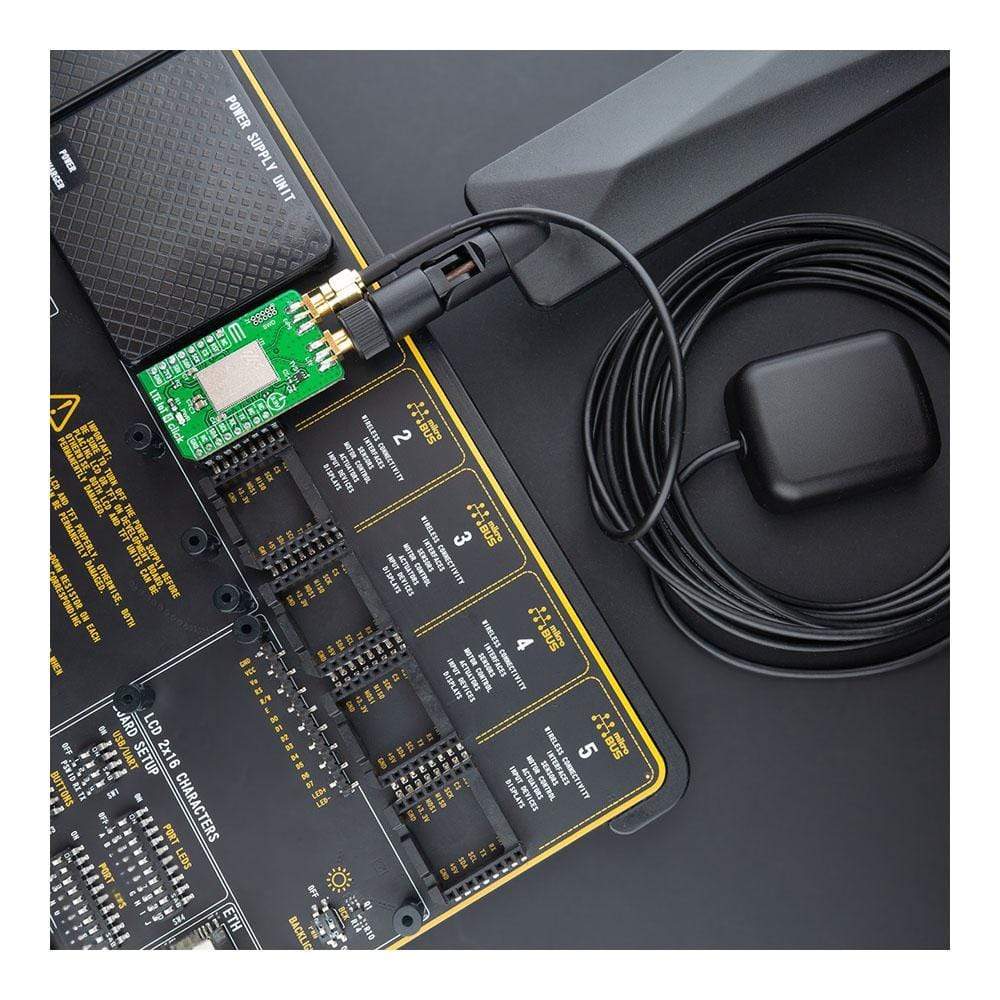
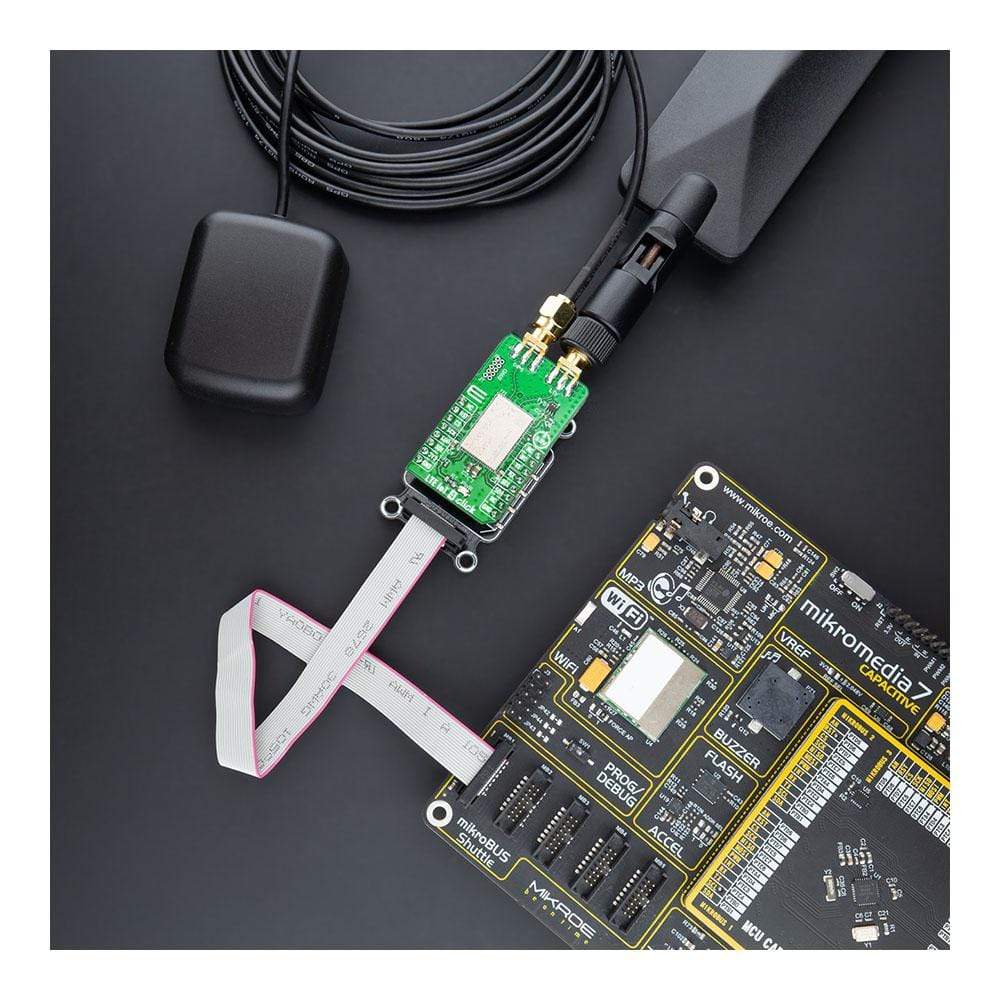
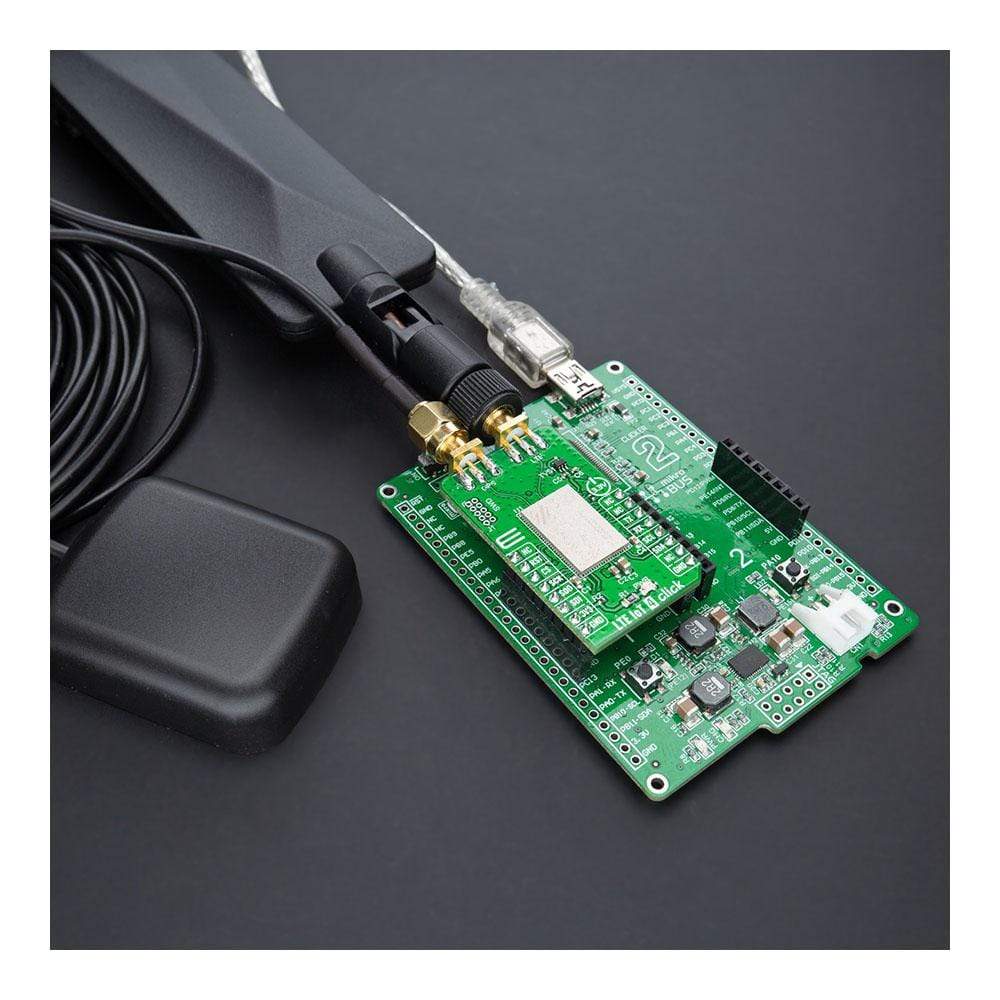
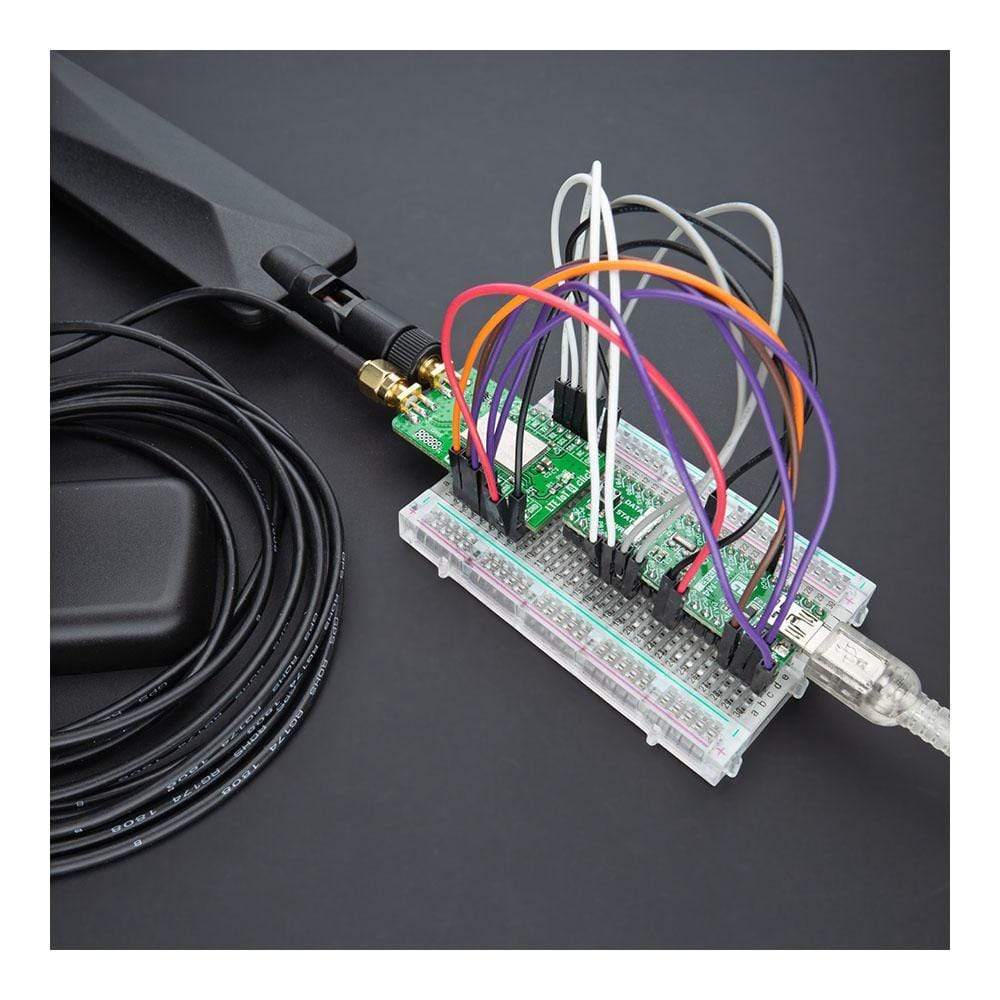
Overview
The LTE IoT 4 Click Board™ is a compact add-on board that contains an IoT module with worldwide coverage. This board features the nRF9160, highly integrated, low-power SiP with LTE-M/NB-IoT and GPS from Nordic Semiconductor. The nRF9160 has an integrated ARM® Cortex®-M33 processor supported by 1MB of Flash and 256KB RAM with advanced security features. It can operate globally, eliminating any need for regional variants, and supports SIM connection and authentication with mobile network operators. This Click Board™ is suitable for logistics and asset tracking, predictive maintenance, industrial, smart agriculture, and many more applications.
The LTE IoT 4 Click Board™ is supported by a mikroSDK compliant library, which includes functions that simplify software development. This Click Board™ comes as a thoroughly tested product, ready to be used on a system equipped with the mikroBUS™ socket.
Downloads
How Does The LTE IoT 4 Click Board™ Work?
The LTE IoT 4 Click Board™ is based on the nRF9160, a compact, highly-integrated System-in-The package (SiP) with an integrated ARM® Cortex®-M33 processor, multimode LTE-M/ NB-IoT modem, RF front end (RFFE), GPS, and power management from Nordic Semiconductor. ARM® Cortex®-M33 processor is supported by 1MB of Flash and 256KB RAM with advanced security features, like Arm CryptoCell that enhances security by offering cryptographic and security resources to help to protect your IoT applications from various attack threats. It also has built-in assisted GPS suitable for tracking applications that combines location data from the Cloud with a GPS satellite to remotely monitor the device's position. The nRF9160 is certified to operate worldwide in the most critical regions, networks, and LTE bands.

The nRF9160 is specifically designed to take full advantage of the energy efficiency associated with the LTE-M and NB-IoT standards. It supports both the PSM and eDRX power-saving modes, enabling the nRF9160 to sleep for a longer period. At the left side of this Click board™, there is an additional header, labelled as SWD, which offers full support of debugging and programming capabilities through the serial wire debug (SWD) interface (SWDIO, SWCLK, and SWO).
The LTE IoT 4 Click Board™ communicates with MCU using the UART interface as its default communication protocol with the option for the users to use other interfaces such as SPI and I2C if they want to configure the module and write the library by themselves using these protocols. It also can be reset through the Hardware Reset pin, labelled as RST on the mikroBUS™ socket, by putting this pin in a logic low state.
The LTE modem integrates a flexible transceiver that supports a frequency range of 700 to 2200 MHz. Also, it possesses two SMA antenna connectors with an impedance of 50Ω, labelled as GPS and LTE, used for connecting the appropriate antenna that MikroE has in its offer. Besides those SMA connectors, this Click board™ also has a nano-SIM card slot that provides multiple connections and interface options.
The LTE IoT 4 Click Board™ is designed to be operated only with a 3.3V logic voltage level. A proper logic voltage level conversion should be performed before the Click board™ is used with MCUs with different logic levels. However, the Click board™ comes equipped with a library containing functions and an example code that can be used as a reference for further development.
SPECIFICATIONS
| Type | LTE IoT,GPS+GNSS |
| Applications | Can be used for applications such as logistics and asset tracking, predictive maintenance, industrial, smart agriculture, and many more. |
| On-board modules | nRF9160 - highly-integrated System-in-The package (SiP) with integrated ARM® Cortex®-M33 processor, multimode LTE-M/ NB-IoT modem, RF front end (RFFE), GPS, and power management from Nordic Semiconductor. |
| Key Features | Low power consumption, fully integrated SiP, multimode LTE-M/NB-IoT modem with integrated RFFE, assisted GPS, certified for global operation, and more. |
| Interface | I2C,UART,SPI |
| Compatibility | mikroBUS |
| Click board size | M (42.9 x 25.4 mm) |
| Input Voltage | 3.3V |
PINOUT DIAGRAM
This table shows how the LTE IoT 4 Click Board™ pinout corresponds to the pinout on the mikroBUS™ socket (the latter shown in the two middle columns).
| Notes | Pin |
 |
Pin | Notes | |||
|---|---|---|---|---|---|---|---|
| NC | 1 | AN | PWM | 16 | NC | ||
| Reset | RST | 2 | RST | INT | 15 | NC | |
| SPI Chip Select | CS | 3 | CS | RX | 14 | TX | UART TX |
| SPI Clock | SCK | 4 | SCK | TX | 13 | RX | UART RX |
| SPI Data OUT | SDO | 5 | MISO | SCL | 12 | SCL | I2C Clock |
| SPI Data IN | SDI | 6 | MOSI | SDA | 11 | SDA | I2C Data |
| Power Supply | 3.3V | 7 | 3.3V | 5V | 10 | NC | |
| Ground | GND | 8 | GND | GND | 9 | GND | Ground |
ONBOARD SETTINGS AND INDICATORS
| Label | Name | Default | Description |
|---|---|---|---|
| LD1 | PWR | - | Power LED Indicator |
| J1 | SWD | Unpopulated | Serial Wire Debug (SWD) Interface |
LTE IOT 4 CLICK ELECTRICAL SPECIFICATIONS
| Description | Min | Typ | Max | Unit |
|---|---|---|---|---|
| Supply Voltage | - | 3.3 | - | V |
| Operating Frequency Range | 700 | - | 2200 | MHz |
| Operating Temperature Range | -40 | +25 | +85 | °C |
| General Information | |
|---|---|
Part Number (SKU) |
MIKROE-4477
|
Manufacturer |
|
| Physical and Mechanical | |
Weight |
0.022 kg
|
| Other | |
Country of Origin |
|
HS Code Customs Tariff code
|
|
EAN |
8606027381799
|
Warranty |
|
Frequently Asked Questions
Have a Question?
Be the first to ask a question about this.

